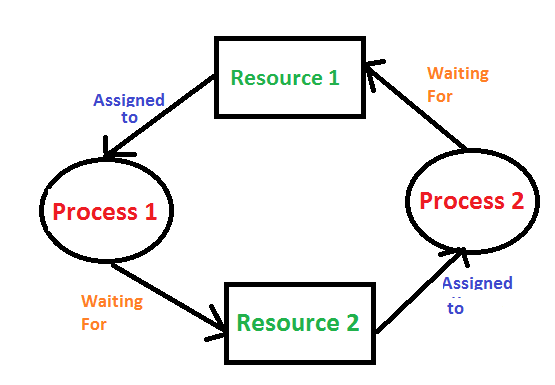Operating Systems 2
Section outline
-
-
Specialization: Software Engineering
Level: Third Year Bachelor's Degree
Module: Operating Systems II
Credit: 5
Unit: Fundamental
Coefficient: 3
Instructor: Mohamed GOUDJIL
Email: mohamed.goudjil@univ-dbkm.dz
-
-
You can ask questions about any topic here in this forum.
-
-
Operating Systems II:
Delving into Process Management
Embark on a journey to master the intricacies of process management, the cornerstone of modern operating systems. This course delves into the creation, scheduling, synchronization, and communication of processes, ensuring seamless execution of multiple tasks.
Explore the intricacies of semaphores and monitors, unravel the mysteries of process intercommunication, and conquer the challenge of deadlock prevention.
-
-
-
This chapter will introduce the fundamental concepts and principles of our course "Operating systems II". It will provide an overview of the different chapters that will be covered throughout the course, detailing the specific topics and themes that will be explored in each.
-
-

-
In the realm of operating systems, mutual exclusion is a fundamental concept that ensures that multiple processes seeking access to a shared resource do not execute critical sections concurrently. This chapter delves into the intricacies of mutual exclusion, exploring various techniques and mechanisms employed to safeguard shared resources and maintain system integrity.
-
-

This chapter delves into the concept of semaphores, a crucial synchronization mechanism employed to coordinate the execution of processes. Semaphores are introduced as a fundamental tool for ensuring efficient and conflict-free resource sharing among multiple processes.
-
Semaphores are synchronization tools used in operating systems to manage concurrent processes and prevent race conditions. They act as signaling mechanisms, allowing processes to communicate and coordinate their actions without conflict. A semaphore typically includes a counter and a queue for managing process access to shared resources. By implementing mutual exclusion and signaling, semaphores help maintain data integrity and system stability. They play a crucial role in ensuring efficient and safe multitasking within a computer system.
-
-

-
The chapter explores the use of monitors as a synchronization construct to address the complexities and potential errors associated with semaphores in concurrent programming. A monitor encapsulates the definition of a critical resource and the operations that manipulate it, ensuring mutual exclusion during execution. The chapter details the structure of a monitor, including shared variable declarations and procedures, and describes how conditions within monitors are used for synchronization through Wait and Signal operations. Overall, the chapter demonstrates how monitors simplify the design and understanding of concurrent programs by providing a structured approach to synchronization.
-
-

-
In this chapter, we delve into the crucial concept of deadlock prevention within the realm of process management in operating systems. We explore various strategies that can be implemented to ensure that system resources are allocated efficiently, thereby avoiding the pitfalls of deadlock scenarios. By understanding and applying these techniques, we aim to enhance the reliability and performance of operating systems. This chapter provides a comprehensive overview of the principles, methodologies, and practical applications of deadlock prevention to equip readers with the tools they need to effectively manage system resources.
-
-
-
Final Exam: Corrected Version
-
Do you have any concerns regarding the final exam?
-


